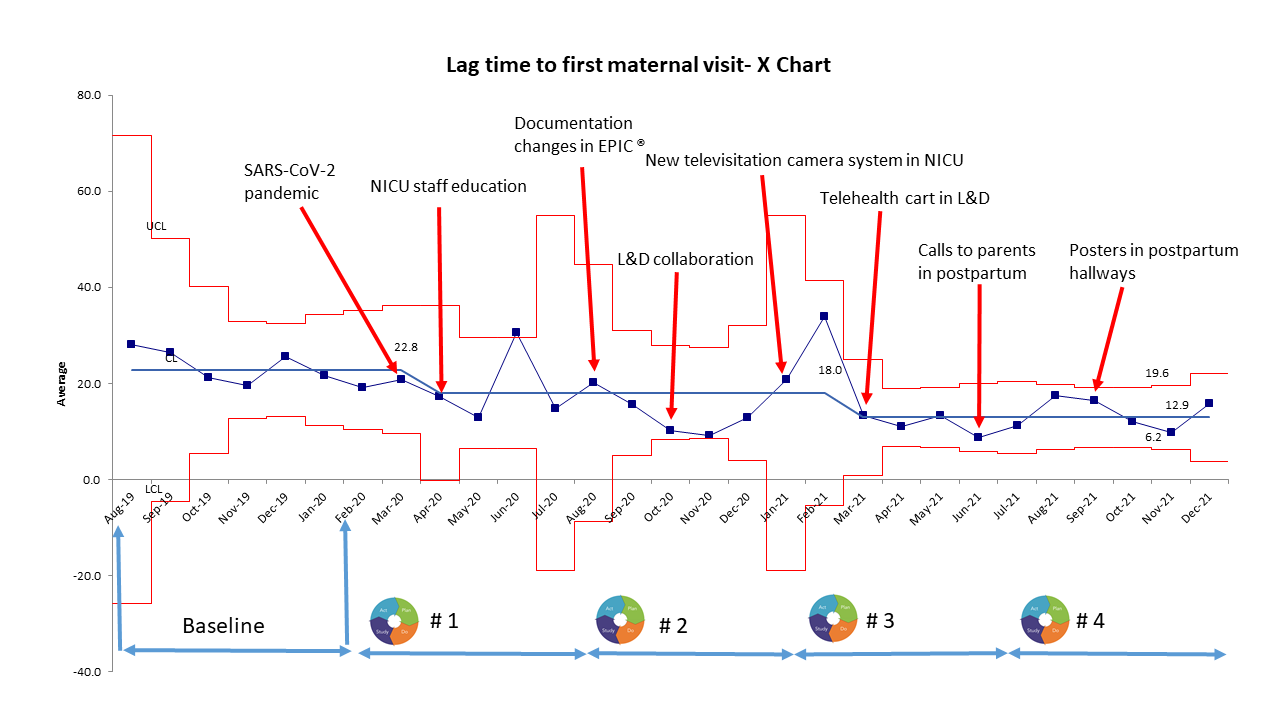Neonatal Quality Improvement
Category: Abstract Submission
Neonatal Quality Improvement I
205 - Accelerating the initial maternal visitation after NICU admission
Friday, April 22, 2022
6:15 PM - 8:45 PM US MT
Poster Number: 205
Publication Number: 205.126
Publication Number: 205.126
Andrew Buckelew, University of Florida College of Medicine, Jacksonville, FL, United States; Dillon O. Snyder, Wolfson Children's Hospital, Jacksonville, FL, United States; P. Sireesha Nandula, University of Florida College of Medicine, Jacksonville, FL, United States; Josef Cortez, UF Health Jacksonville, Saint Johns, FL, United States; Tina M. Smith, University of Florida, jacksonville, FL, United States; Jennifer N. Meyers, UF Health Jackskonville, Jacksonville, FL, United States; Ashley Aderhold, UF Health Jacksonville, Keystone heights, FL, United States; Sanket D. Shah, University of Florida College of Medicine, Jackonsville, FL, United States; Samarth Shukla, University of Florida College of Medicine, Jacksonville, FL, United States; Louise Webb, UF Health Jacksonville, Jacksonville Beach, FL, United States; Mark L. Hudak, University of Florida College of Medicine - Jacksonville, Jacksonville, FL, United States

Andrew Buckelew, D.O.
PGY-3
University of Florida College of Medicine
Jacksonville, Florida, United States
Presenting Author(s)
Background: NICU admission is a highly stressful situation for parents and may have lasting adverse effects on parental bonding. Lack of transportation, maternal medical conditions, and altered visitation policies due to SARS- CoV- 2 pandemic may further compromise parental bonding. Recent evidence supports the efficacy of early visitation on improving maternal bonding. We aimed to reduce the length of time between birth and the first maternal visit ("lag time") to the NICU as a part of a broader Family-Centered Care Initiative.
Objective: We aimed to reduce the mean lag time from 22 hours in August 2019 to 12 hours by June 2021.
Design/Methods: We collected data from maternal visit documentation in EPIC® following the neonate’s admission to UF Health Jacksonville NICU. Exclusion criteria included infant death within 24 hours and admission from newborn nursery after 24 hours of life. We performed statistical process control (SPC) analysis using an XbarS chart to evaluate for special-cause variations associated with our interventions. Primary and secondary drivers are shown in Figure 1. Our PDSA cycles were as follows: PDSA Cycle 1 (March 2020- August 2020): We provided evidence-based education to NICU staff supporting the importance of early maternal visitation. PDSA Cycle 2 (September 2020- January 2021): We collaborated with Labor and Delivery (L&D) staff to improve communication between NICU and L&D and created a template in EPIC® to record maternal televisitation. PDSA Cycle 3 (February 2021- June 2021): We initiated a televisitation capability for mothers who could not physically visit the NICU due to certain medical conditions. We also made phone calls to mothers within 12 hours of an infant’s admission to the NICU. PDSA Cycle 4 (July 2021- Present): We mounted posters in postpartum rooms and hallways that promoted our televisitation capabilities.
Results: Collaboration with L&D staff and documentation changes in EPIC® successfully reduced our lag time from an average of 22.8 hours to 12.9 hours. Though the introduction of a new televisitation system briefly increased our lag time in February 2021, enhanced promotion of our project resulted in a downward trend to an average lag time of 12.9 hours (Figure 2). Variability decreased by almost 50% (Figure 3). A survey of 20 parents showed a positive response to and appreciation of televisitation.Conclusion(s): Our unit successfully reduced maternal first visit lag time from a mean of 22.8 hours to 12.9 hours by the third PDSA cycle. Collaboration with L & D staff and initiation of a televisitation protocol during the COVID-19 pandemic helped achieve our goal.
AMB CV.pdf
Lag time to first maternal visitation- X chart Lag time to first maternal visitation- S chart
Lag time to first maternal visitation- S chart
Objective: We aimed to reduce the mean lag time from 22 hours in August 2019 to 12 hours by June 2021.
Design/Methods: We collected data from maternal visit documentation in EPIC® following the neonate’s admission to UF Health Jacksonville NICU. Exclusion criteria included infant death within 24 hours and admission from newborn nursery after 24 hours of life. We performed statistical process control (SPC) analysis using an XbarS chart to evaluate for special-cause variations associated with our interventions. Primary and secondary drivers are shown in Figure 1. Our PDSA cycles were as follows: PDSA Cycle 1 (March 2020- August 2020): We provided evidence-based education to NICU staff supporting the importance of early maternal visitation. PDSA Cycle 2 (September 2020- January 2021): We collaborated with Labor and Delivery (L&D) staff to improve communication between NICU and L&D and created a template in EPIC® to record maternal televisitation. PDSA Cycle 3 (February 2021- June 2021): We initiated a televisitation capability for mothers who could not physically visit the NICU due to certain medical conditions. We also made phone calls to mothers within 12 hours of an infant’s admission to the NICU. PDSA Cycle 4 (July 2021- Present): We mounted posters in postpartum rooms and hallways that promoted our televisitation capabilities.
Results: Collaboration with L&D staff and documentation changes in EPIC® successfully reduced our lag time from an average of 22.8 hours to 12.9 hours. Though the introduction of a new televisitation system briefly increased our lag time in February 2021, enhanced promotion of our project resulted in a downward trend to an average lag time of 12.9 hours (Figure 2). Variability decreased by almost 50% (Figure 3). A survey of 20 parents showed a positive response to and appreciation of televisitation.Conclusion(s): Our unit successfully reduced maternal first visit lag time from a mean of 22.8 hours to 12.9 hours by the third PDSA cycle. Collaboration with L & D staff and initiation of a televisitation protocol during the COVID-19 pandemic helped achieve our goal.
AMB CV.pdf
Lag time to first maternal visitation- X chart
 Lag time to first maternal visitation- S chart
Lag time to first maternal visitation- S chart